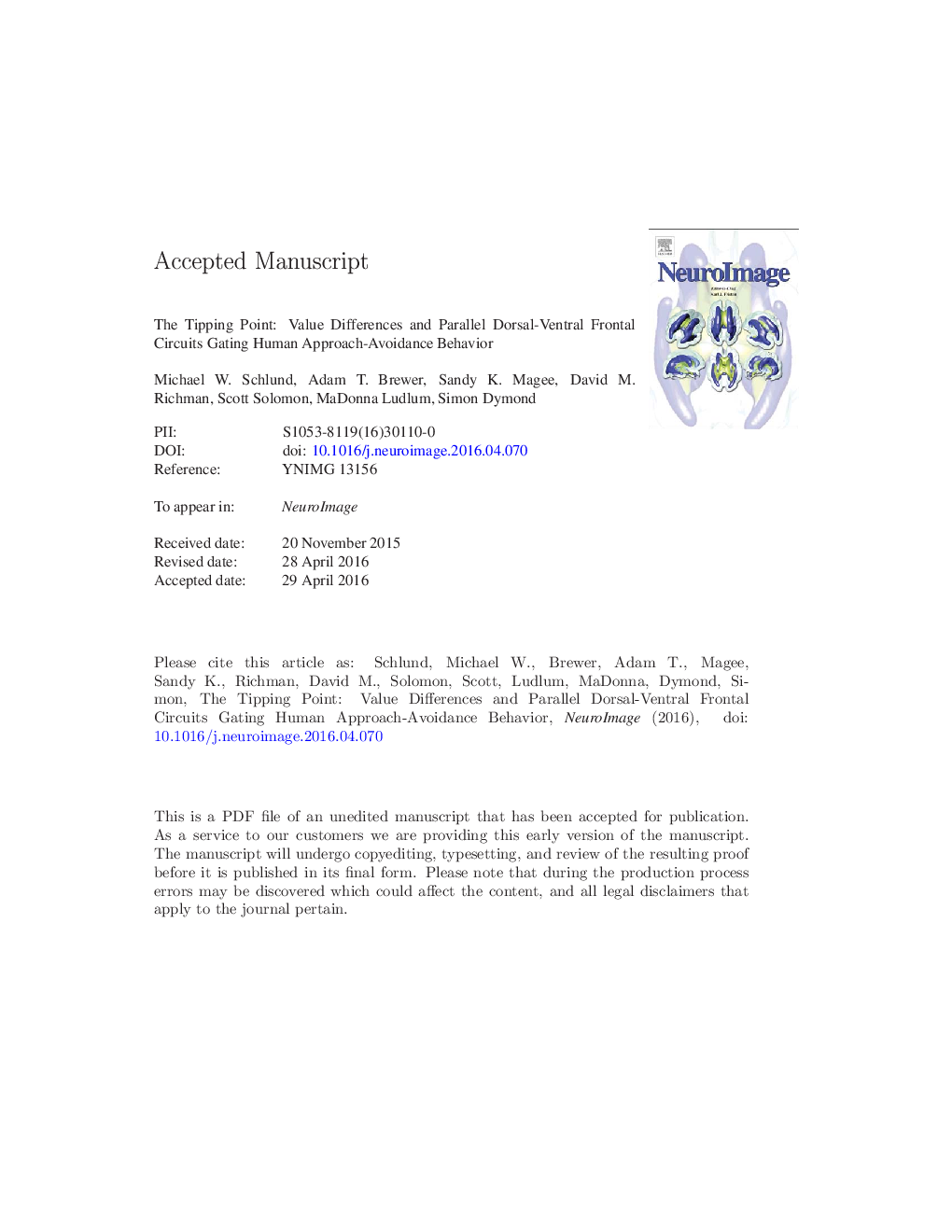| کد مقاله | کد نشریه | سال انتشار | مقاله انگلیسی | نسخه تمام متن |
|---|---|---|---|---|
| 6023632 | 1580872 | 2016 | 49 صفحه PDF | دانلود رایگان |
عنوان انگلیسی مقاله ISI
The tipping point: Value differences and parallel dorsal-ventral frontal circuits gating human approach-avoidance behavior
ترجمه فارسی عنوان
نقطه اوج: تفاوت های ارزش و مدارهای موازی ران و مویرگی موازی با رفتار اجتناب انسانی
دانلود مقاله + سفارش ترجمه
دانلود مقاله ISI انگلیسی
رایگان برای ایرانیان
کلمات کلیدی
اجتناب از درک، تصمیم سازی، تهدید، تعارض، اضطراب، مقطع قدامی قدامی،
موضوعات مرتبط
علوم زیستی و بیوفناوری
علم عصب شناسی
علوم اعصاب شناختی
چکیده انگلیسی
Excessive avoidance and diminished approach behavior are both prominent features of anxiety, trauma and stress related disorders. Despite this, little is known about the neuronal mechanisms supporting gating of human approach-avoidance behavior. Here, we used functional magnetic resonance imaging (fMRI) to track dorsal anterior cingulate and medial prefrontal (dACC/dmPFC) activation along an approach-avoidance continuum to assess sensitivity to competing appetitive and aversive contingencies and correspondence with behavior change. Behavioral and fMRI experiments were conducted using a novel approach-avoidance task where a monetary reward appeared in the presence of a conditioned stimulus (CS), or threat, that signaled increasing probability of unconditioned stimulus (US) delivery. Approach produced the reward or probabilistic US, while avoidance prevented US delivery, and across trials, reward remained fixed while the CS threat level varied unpredictably. Increasing the CS threat level (i.e., US probability) produced the desired approach-avoidance transition and inverted U-shaped changes in decision times, electrodermal activity and activation in pregenual ACC, dACC/dmPFC, striatum, anterior insula and inferior frontal regions. Conversely, U-shaped changes in activation were observed in dorsolateral and ventromedial prefrontal cortex and bimodal changes in the orbitofrontal and ventral hippocampus. These new results show parallel dorsal-ventral frontal circuits support gating of human approach-avoidance behavior where dACC/dmPFC signals inversely correlate with value differences between approach and avoidance contingencies while ventral frontal signals correlate with the value of predictable outcomes. Our findings provide an important bridge between basic research on brain mechanisms of value-guided decision-making and value-focused clinical theories of anxiety and related interventions.
ناشر
Database: Elsevier - ScienceDirect (ساینس دایرکت)
Journal: NeuroImage - Volume 136, 1 August 2016, Pages 94-105
Journal: NeuroImage - Volume 136, 1 August 2016, Pages 94-105
نویسندگان
Michael W. Schlund, Adam T. Brewer, Sandy K. Magee, David M. Richman, Scott Solomon, MaDonna Ludlum, Simon Dymond,
